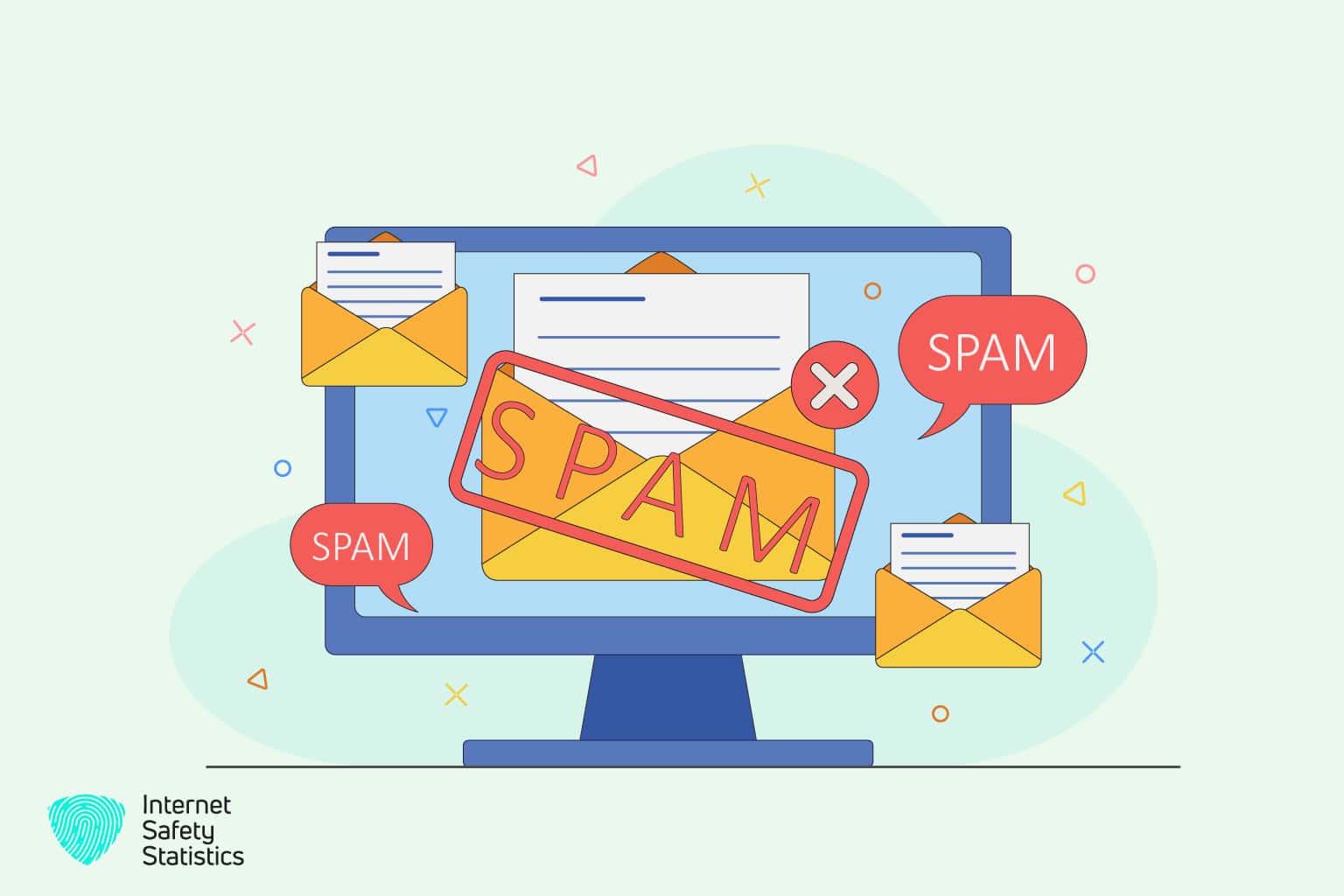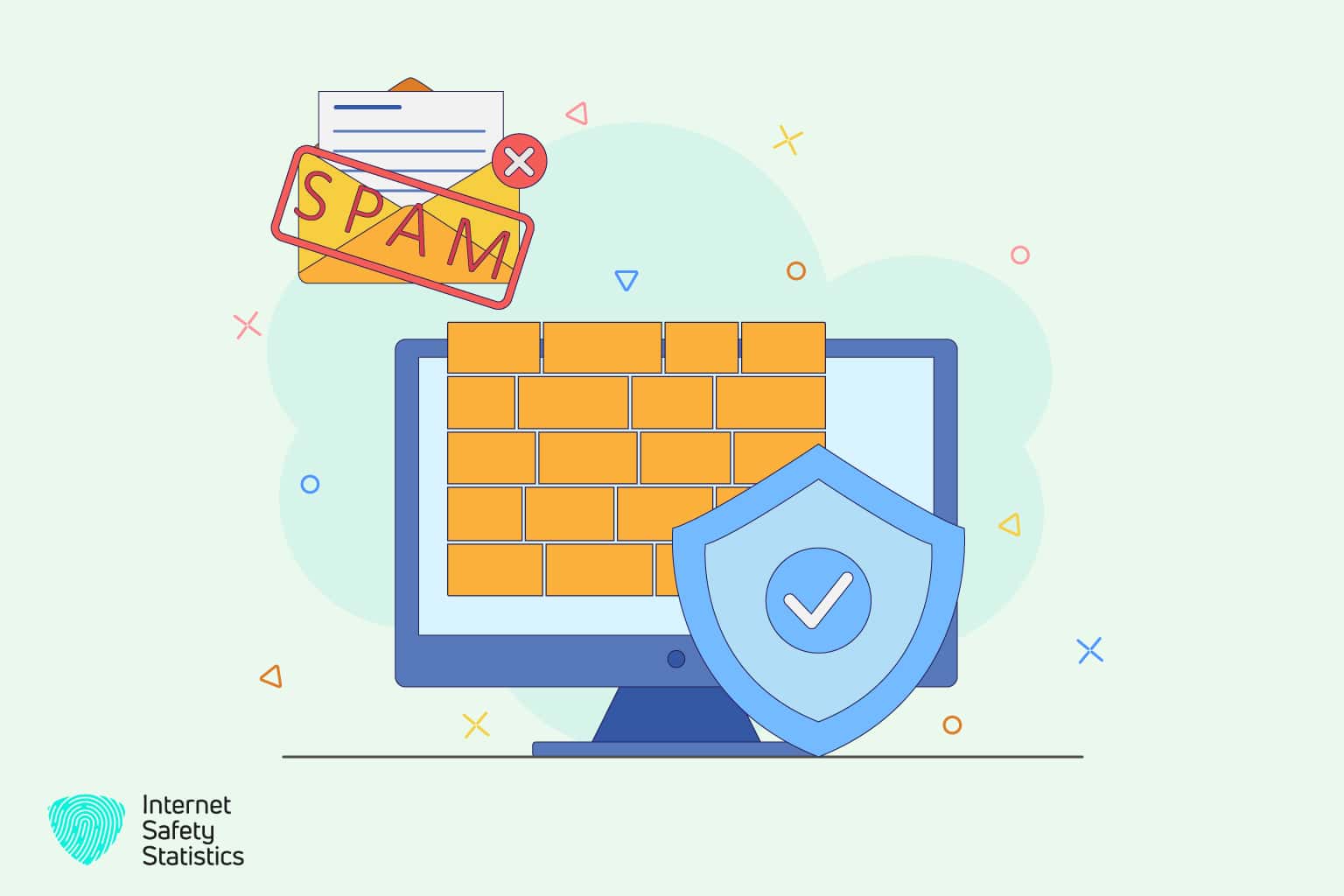
Internet is a daily staple in everyone’s life; we feel lost if we ever get disconnected from the digital world. However, it can still be a dangerous place if the issues that come with it are left unattended. Cybercriminals are increasing in number and power day by day. They use different methods to get what they want, and spam is one of the most common cyber problems.
Nowadays, spamming is a slang word that describes sending unwanted messages or continuously establishing undesired communication. When someone starts spamming you, it means they keep sending many messages you have no intention or interest in replying to. It turns out that spamming can actually be more than just unharmful messages.
Spam comes in different types, but all of them share the same method of being carried out. It is the act of sending a bulk of messages in emails or any other way for either harmless purposes like advertising or to spread malicious codes and cause damage. We are here to familiarise you with the most common types of spam, how to identify them, and how to prevent or get rid of them.
Types of Spam
Spamming is now deemed one of the most significant internet issues that require serious measures to protect yourself. It is sometimes referred to as a virus, given the damaging consequences that can result from spamming. Yet, it is essential to note that there are harmless types of spamming, including selling or promoting products to increase sales.
On the other hand, most spammers aim to deceive recipients by stealing their personal information, money, or even private online data. We will give you a brief introduction about each of the most common types so that you know the difference between their purposes.
Phishing Emails
Phishing is deemed one of the most common malware types, although it can be used for other purposes. This type of spam works by sending the victim a message, tricking them into unravelling their personal or financial information. The attacker may include a malicious code or link within the message that unleashes a harmful infection to the victim’s device when opened.
Money Scams
Money scams were one of the most common spam methods that hugely circulated in the 90s. It still stands today, but technology users are becoming more aware of such messages. Money scams work by sending an ad-like message, offering the victim to read their future or revealing some sort of secret in exchange for money.
Email Spoofing
Spoofing attacks are pretty similar to phishing. The only difference is that in spoofing, the attacker forges a header or an email address, deceiving the victim to believe it comes from someone they know or a trusted source. Such trust can lead the user to click on the malware attachments included in the message, releasing an infection into their device, where the attacker can steal their sensitive information.
Comment Spam
Comment spam, also known as spomment, is pretty standard in the blogging world. This type of spam has been used since the early 2000s and continues. These comments are when the spammer adds an irrelevant comment to a post, promoting anything that is usually finance-related. Such comments can affect the traffic to your website or profile, so it is always wise to delete them.
Malware Warnings
There is a better chance that you have come across a malware warning at least once. This type of spam works by popping up fake ads, claiming that a malicious virus has infected your device. This would make many people freak out and click on the link that promises to instantly install antivirus software to clean their devices. Needless to say, these links are malicious and can destroy your device or let your attacker get your most confidential data.
Hoaxes
As the word suggests, this type of spam is a trick to get people to spread certain information (usually a false one) and keep it circulating in as many places as possible. Chain letters are one type of these hoaxes, where the attacker sends a message, convincing the victim to share among their friends, and so keeps the message going, making it hard to take it down.
Porn Spam
Porn spam is the act of receiving explicit images or messages, encouraging the user to click on links from unknown sources. These links often contain malicious codes or attachments, infecting your device with malware and damaging your data. Another form of porn spam is sending a fake message, claiming that they have inappropriate pictures or videos of the user. The attackers blackmail them into sending money, or else they will publish their scandalous pictures in public. These attackers bluff their victims to rob them financially, yet many people fall for their lies.
Successful Ways to Recognise Spam

Spam emails are often deceiving. While you can never control the amount of spamming emails and messages you get, you can at least train yourself to recognise them. Here are some tips on how you can protect yourself from the dire consequences of spamming.
1. Use Anti-Virus Software
Antivirus software programs are not to be taken lightly. They help defend your system against invading malware, update it regularly, block out unusual activity, and recognise spam. Yes, most of these programs are designed to detect unusual activity and deceiving messages when it is there. So, make sure you install antivirus software from a trusted source and keep your data safe.
2. Double Check the Email of the Sender
Email spoofing is one of the most popular spamming methods. For that reason, it is always important to double-check the email from which you received your message. If it doesn’t match the email of the person you know, it is 100% spam unless they inform you otherwise in person. Looking at the name alone won’t help, for the names can be duplicated, but the emails cannot.
3. Check for Spelling or Grammar Mistakes
Trusted sources rarely make silly grammar mistakes or very obvious typos. Many spammers fall into this hole, revealing themselves in a blink of an eye. Read your emails carefully, especially the ones from your banks, any financial-related departments, and governmental sectors. Moreover, you can pass the suspicious email through an online grammar checker. It will accurately check the email for all typos, grammar, as well as punctuation errors. If you find a mistake, make sure you don’t respond and immediately take action to ensure your data is safe.
4. Ignore Messages that Seem Too Good to be True
Pop-up ads are pretty annoying. Some of them come in the form of a written email, promising you to grant all your wishes in a very fairytale-like manner. If you ever receive an email of this nature, move it to the trash immediately. You cannot lose 100 pounds in a week, you cannot travel the world for free, and you cannot earn billions of dollars overnight. Such ads are totally spam.
5. Be Skeptical About Urgent Subjects
Spammers sometimes use the element of urgency to deceive their victims by tricking them into believing there is a ticking clock. When you receive a message claiming you need to provide sensitive information so they can save you from something dangerous, this is a crystal clear danger. Whatever they urge you to do, don’t trust them with your confidential data.
6. Don’t Click on Unknown Links
Links are everywhere to be found. In comments, in emails, and on random social media platforms. That is how the digital world works. The key to protecting yourself is to never mindlessly click on those links without ensuring they are safe and not malicious code. Links with malware usually have a format you can easily spot once you train your eyes to spot these traps.
7. “Not A Spam Message” is a Spam
Many spammers are so desperate that they use this once so-popular message that reads “Not a Spam Message.” They are well aware that their games have become more obvious to many internet users, so they use this trick as a method to reassure you and trick you into taking the action they are asking for. Such a message is a huge red flag. Kick it down right away and move on with your life.
